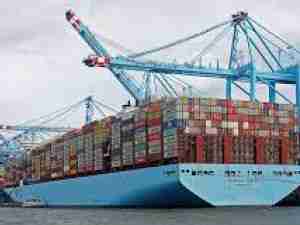Key insights:
- As the lockdown in Shanghai continues and the volume of available exports remains suppressed, the major ocean carrier alliances announced additional cancellations totalling more than a third of the scheduled sailings out of Asia through early June.
- The removal of capacity could stabilize container rates out of Asia to Europe and the US West Coast, which have fallen by more than 20% since the initial shutdown in Shenzhen in March.
- Despite the slowdown, projections for ocean import volumes to the US through the summer months remain higher than last year, indicating a pull forward of demand to avoid peak season delays and possible labor disruptions at West Coast ports when an important dockworker labor contract expires at the end of June.
Asia-US rates:
- Asia-US West Coast prices (FBX01 Daily) decreased 3% to $12,217/FEU. This rate is 67% higher than the same time last year.
- Asia-US East Coast prices (FBX03 Daily) were stable at $15,982/FEU, and are 115% higher than rates for this week last year.
Analysis
COVID case numbers in Shanghai fell to a six-week low this week, but restrictions in many areas of the city are getting tighter, and expectations are that the eventual reopening will be gradual.
With available exports still way down as manufacturing and trucking remain significantly impacted, the major ocean carrier alliances have announced cancellations of at least a third of their scheduled sailings out of Asia through early June, affecting Asia-Europe services more than transpacific.
Asia - US West Coast rates fell 3% this week while Asia - North Europe prices were unchanged, though rates on both lanes have decreased by more than 20% since the first lockdown began in Shenzhen in March. The removal of capacity through blanked sailings could stabilize rates even as demand remains suppressed.
Similarly, Freightos Air Index air cargo rates out of Shanghai to N. Europe have fallen 46% to $6.33/kg since the lockdown began in early April, and freightos.com marketplace rates show Shanghai - US West Coast rates have fallen by 20%, but prices on both lanes remain well above normal level as carriers have reduced capacity by canceling flights.
Despite inflation, still-elevated shipping costs, the Shanghai disruptions and signs of a shift to spending on services, the latest NRF data show no sign of slowing US demand for ocean imports. March set a new record for monthly container imports, and though volumes from April through August are expected to be below that level, imports this summer are projected to be higher than last year.
These volume increases may reflect the pull forward of peak season demand as importers try to get ahead of both the delays experienced last year and the possibility of additional slowdowns at West Coast ports in July when an important dockworker labor contract expires – negotiations for which began this week.










